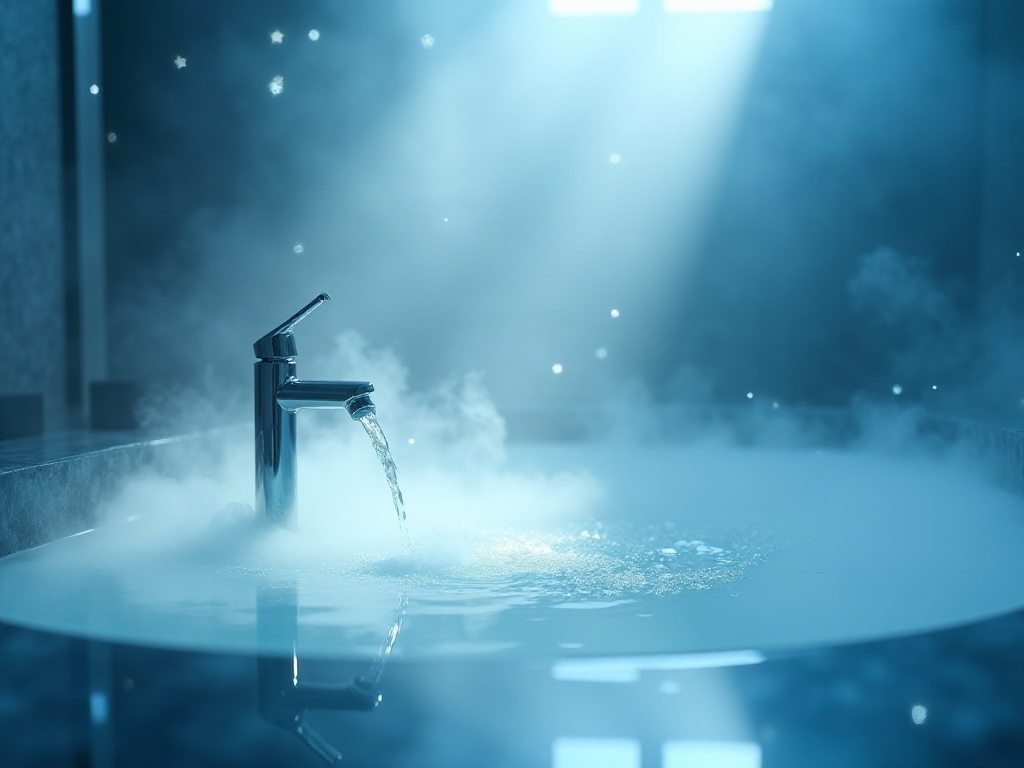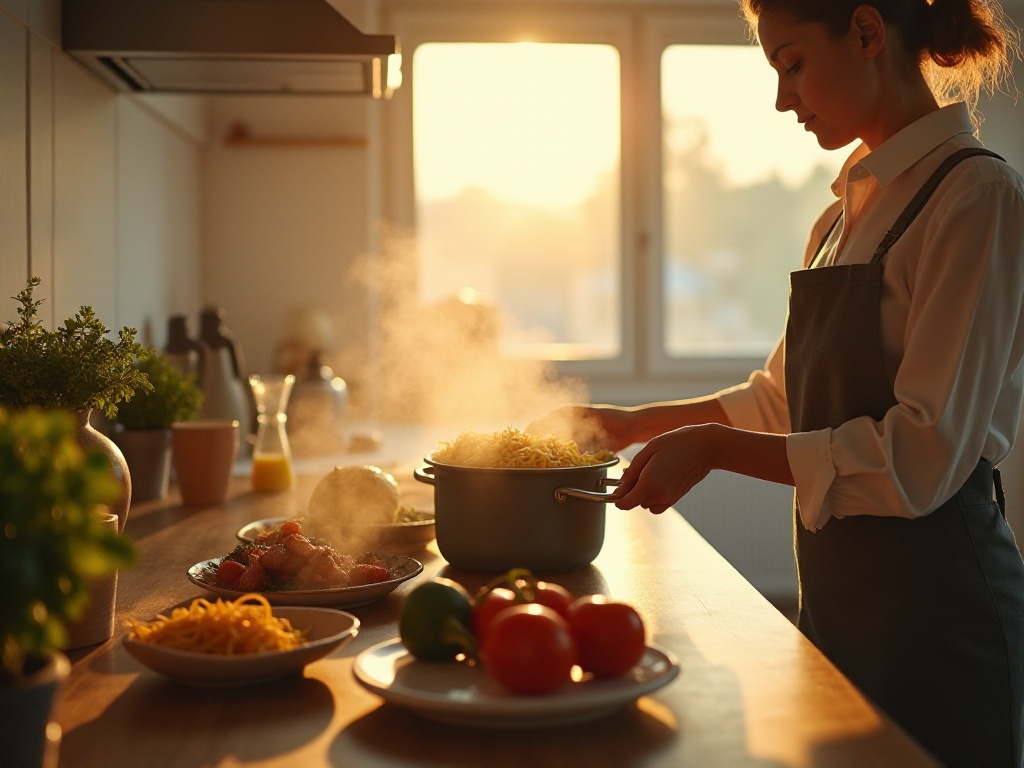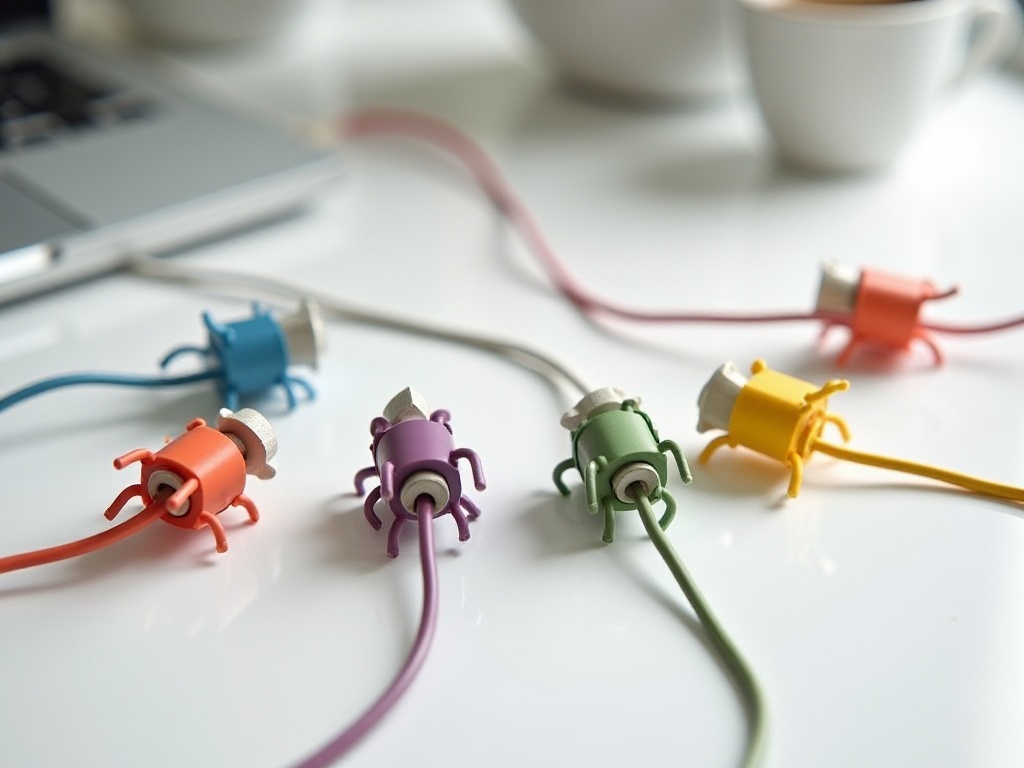Are you often in a rush because you can't find things? Or always running late due to difficulty getting up? Let me share some super practical tips to help you say goodbye to a chaotic life.
Speaking of getting up, I recently discovered a brilliant technique - placing the alarm clock at the furthest point from the bed. When I first tried this method, I was quite resistant, after all, who doesn't want to stay in their warm bed a little longer? But after sticking to it for a month, the results were remarkable. Previously, I had to hit snooze seven or eight times before getting up, but now I have to get up to turn off the alarm, which helps me wake up. I tracked my progress and found that my on-time wake-up rate improved by 80%! Plus, I noticed my mental state in the morning is much better than before.
Regarding preparing items for the next day, I really must strongly recommend this. I remember when I first started working, every morning was chaotic - searching for clothes, bags, and keys, often running late because I couldn't find things. Later, I developed the habit of spending 10 minutes before bed preparing things for the next day, and the results were incredible!
Now I lay out the next day's clothes on a hanger before bed, including accessories and shoes. I pack my bag and place essential items like keys and chargers in fixed locations. I even set out breakfast utensils in advance. You might think these are small things, but studies show this simple habit can save nearly 30 minutes in the morning.
Additionally, I've found that establishing a fixed morning routine is particularly important. For example, my current routine is: wake up at 6:30, drink a glass of warm water, do 15 minutes of simple stretching exercises, then wash up, get dressed, and eat breakfast. Each step has a fixed time, eliminating chaos. This way, even if sleep quality isn't great, I can maintain a relatively stable state the next morning.
I especially want to mention that good sleep quality is really important for early rising. Now I stay away from my phone an hour before bed, opting instead to read physical books or listen to light music. I also dim the room lights to create a comfortable sleeping environment. Drinking warm milk or honey water before bed helps with both falling asleep and calming emotions.
When it comes to the kitchen, a place everyone deals with daily, it's really worth studying how to make it more efficient and practical. Let's start with food storage.
I recently learned an amazing trick: wrapping cheese in parchment paper. This method is a revolutionary breakthrough in cheese storage! Previously, I would just loosely wrap it in plastic wrap, but the cheese would dry out after a few days and lose its texture. Now, using parchment paper, it not only retains moisture but also allows the cheese to breathe. My cheddar cheese stored this way can last an extra week without drying out, maintaining its smooth and rich texture.
Speaking of food storage, I want to share a foolproof way to check avocado ripeness. Want to know when an avocado is perfect for eating? It's actually very simple - just gently lift the stem and check the color underneath. If it's light-colored, it's ready to eat; if it's dark, it's overripe. This method is so practical - since learning this trick, I never worry about cutting open an avocado to find it's turned black inside. I've also discovered that if you buy hard avocados, placing them with bananas can speed up the ripening process.
Beyond these, I want to share some kitchen organization and usage tips. For instance, I now keep frequently used seasonings on a rotating tray - just spin it to find what you need, no more searching around. I also group different types of seasonings together, like baking ingredients in one place and stir-fry seasonings in another, making cooking much more convenient.
Vegetable storage is also an art. Leafy greens should be stored in refrigerator bags, but remember to poke a few holes in the bags to allow them to breathe. Root vegetables like carrots and potatoes are best stored in a cool, ventilated place rather than the refrigerator - they'll last longer this way.
I also love hanging frequently used kitchen tools on the wall, like spatulas and spoons. This not only saves drawer space but is also very convenient. I've found that hanging tools on the wall can also serve as decoration, making the kitchen feel more lived-in.
Speaking of kitchen organization, I must mention my "star product" - vacuum storage containers. These are really space-saving miracle workers, and they help food stay fresh longer. I now store all my grains in vacuum containers, which not only looks neat and beautiful but also prevents insects and moisture.

Storage can be said to be a major challenge for everyone, especially for small spaces where maximizing limited space really requires some thought.
My home recently completed a thorough storage makeover with amazing results. What surprised me most was using straws to prevent necklaces from tangling. This trick is absolutely a blessing for jewelry storage! The specific method is to thread the necklace through a straw before clasping it, which completely prevents tangling. When I traveled recently, I packed 20 necklaces this way, each with a different colored straw - not only preventing tangles but also making it easy to find the one I wanted. When I returned, truly not a single one was tangled, saving lots of organizing time.
Power cord organization is also a headache. I used to get frustrated with various data cables, chargers and cords all mixed together, making it exhausting to find a specific cable. Later I discovered using bread bag clips to secure and label various cables works really well. I use different colored clips for different devices - red for phone chargers, blue for tablets, green for laptops - making them instantly recognizable. Plus these clips can secure cables to the desk surface, keeping everything neat and tidy. Since using this method, I never waste time figuring out which cord is for charging versus data transfer.
Closet organization is also key. I now use a dual classification method by season and type. Current season clothes are placed in easily accessible positions, while off-season clothes are stored in storage boxes. At the same time, I group similar types of clothes together, like all T-shirts in one place, shirts in another. This makes finding clothes very convenient.
To make the closet look neater, I bought hangers in a uniform style, which looks very pleasing. When folding clothes I use the vertical storage method, storing clothes upright, which not only saves space but also allows you to see all clothes at once, preventing mess from searching through stacks.
Shoe storage also requires technique. I use a tiered shoe rack with different types of shoes stored separately. One layer for sneakers, one for dress shoes, one for sandals. I put moisture absorbers in each pair of shoes to keep them dry and prevent odors.
Book and document storage is another focus. I now use folders to store important documents by category, with each folder labeled so I can find what I need instantly. Books are organized by category, with textbooks, novels, and magazines each having their own place. Frequently used books are kept within easy reach, while less used ones can be placed on higher or lower shelves.

There are opportunities for innovation everywhere in life, and sometimes a small change can bring unexpected convenience.
Speaking of beverages, have you ever encountered this situation: wanting a cold drink but not wanting it diluted by ice cubes? This problem bothered me for a long time until I discovered the brilliant idea of using frozen grapes instead of ice cubes. Last week when I entertained friends at home, I used this method, putting pre-frozen grapes in juice - not only keeping drinks cold but also not diluting them like melting ice cubes would. And after finishing the drink, these juice-soaked grapes make perfect desserts! My friends all said this idea was great and expressed interest in trying it themselves.
Here's another trick I've been loving recently: adding milk to nearly empty jam jars. This method not only fully utilizes the jam but also creates delicious fruit-flavored milkshakes. Specifically, when the jam is almost gone, pour in some warm milk, cover and shake gently, and the jam residue on the jar walls will dissolve into the milk. This way you don't waste any jam and get to enjoy a tasty fruit milkshake. I especially love using strawberry jam - the resulting shake has both rich dairy flavor and sweet fruit notes, making it a perfect afternoon tea drink.
There are many creative ideas for home cleaning too. For instance, I discovered that using a mixture of vinegar and baking soda is particularly effective for cleaning sinks. First sprinkle baking soda, then add a few drops of vinegar, and after foam forms, gently scrub with a brush - the sink becomes sparkling clean. This method is not only environmentally friendly but also removes sink odors.
When caring for leather shoes, I use the inside of banana peels to polish them, then buff with a soft cloth. Banana peels contain natural oils that can make leather shoes softer and shinier. This method doesn't require buying shoe polish yet works very well.
Another particularly useful tip is using old toothbrushes to clean keyboards. Slightly dampen the toothbrush and you can easily clean dust from keyboard crevices. This method is much more thorough than using cloths and won't damage the keyboard.

When it comes to improving efficiency, I have so many experiences to share. First is about cooking efficiency. I've developed a really good habit: whenever I cook, I prepare an extra portion in a container for the next day's lunch. This method really kills multiple birds with one stone: it not only saves time preparing lunch the next day but also saves money on takeout. I calculated that just for lunch alone, this helps me save at least 500 yuan each month. Plus, self-prepared lunches are healthier and more suited to my taste preferences.
In the kitchen, I particularly emphasize cleaning as I go. For example, when stir-frying, while ingredients are cooking, I use the time between stirring to put used cutting boards and knives in the dishwasher. This way, by the time the food is ready, the kitchen is basically clean. This habit has reduced my post-meal cleanup time from 40 minutes to 10 minutes, showing significant efficiency improvement.
Regarding work efficiency, I've found batch processing tasks particularly useful. For example, when dealing with emails, I'll specifically schedule a time block to handle all emails rather than checking each one as it arrives. This not only maintains continuity of thought but also increases efficiency.
Time management is also key to improving efficiency. I now use the Pomodoro Technique, focusing on work for 25 minutes followed by a 5-minute break. This method is particularly suitable for work requiring long periods of concentration, maintaining high efficiency without becoming too tired.
Another particularly effective method is creating daily lists. Every morning I list out the three most important things for the day, then complete them according to priority. This not only gives me a better sense of purpose but also increases task completion efficiency.
Regarding phone usage, I regularly clean out rarely used apps and organize frequently used apps into different folders by function. This eliminates endless scrolling when looking for apps. I also turn off push notifications for most apps, preventing frequent interruptions while working.

These life tips may seem simple, but they really can make life easier. Have you noticed that often what we need isn't some profound theory, but these accessible small changes? Life is like a big puzzle - each small tip is a piece, and when we put these pieces together, we discover life becomes more beautiful.
The most important thing is to cultivate an awareness of continuous improvement, because we'll always encounter new problems and discover new solutions in life. Everyone's living habits and needs are different, so we need to learn to adjust these tips according to our own situations.
By the way, do you have any unique life hacks? Feel free to share in the comments section. Your experience might help others. Remember, improvements in quality of life often lie in these details. Let's work together to create a more efficient and organized life!
 Previous
Previous
